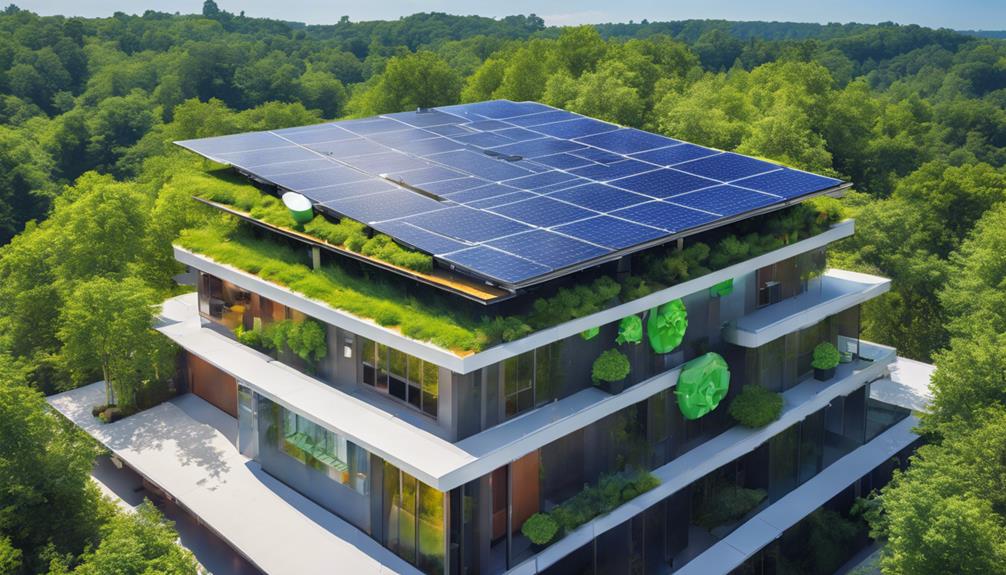
Understanding Miami’s Flooding Challenges
Miami is no stranger to flooding, with its geographic location making it highly susceptible to rising sea levels, heavy rainfall, and storm surges. The city’s low-lying topography exacerbates these issues, leading to frequent street flooding and compromised infrastructure. As climate change continues to intensify, Miami faces significant threats to its environment and urban planning. However, innovative solutions are emerging, and one of the most promising is the integration of solar panels. This article explores how solar panels can decrease flooding issues in Miami and contribute to a more resilient future.
The Role of Solar Panels in Sustainable Urban Development
Sustainable urban development is critical for cities like Miami, where environmental challenges are prevalent. Solar panels play an essential role in this movement by providing renewable energy while reducing dependence on fossil fuels. By generating clean energy, solar panels can help alleviate some of the factors that contribute to flooding, such as urban heat islands. These heat islands can exacerbate precipitation intensity, leading to increased flooding. By installing solar panels, cities can promote green infrastructure, ultimately helping to manage stormwater and reduce flooding risks.
How Solar Panels Promote Green Infrastructure
Green infrastructure refers to natural systems that manage stormwater and enhance urban resilience. Solar panels can be integrated into various green infrastructure projects, such as green roofs and permeable pavements. These installations not only generate renewable energy but also allow rainwater to be absorbed or redirected, reducing runoff and minimizing flooding. For example, solar panels installed on rooftops can help mitigate water accumulation by directing excess water into storage systems or vegetated areas. This synergy between solar energy and green infrastructure can significantly reduce the flooding challenges that Miami faces.
Solar Panels and Water Management Systems
Water management systems are crucial in combating flooding, especially in cities prone to excessive rainfall. Solar panels can power these systems, enhancing their efficiency and effectiveness. For example, solar energy can be used to operate pumps that manage stormwater runoff or to power treatment facilities that process excess water. By utilizing solar panels, Miami can create a more sustainable water management system that not only reduces the risk of flooding but also harnesses renewable energy. This dual benefit aligns with the city’s goal of fostering sustainability while addressing pressing environmental issues.
Reducing Urban Heat Islands with Solar Energy
Urban heat islands (UHIs) are areas in cities that experience significantly higher temperatures than their rural surroundings due to human activities and infrastructure. In Miami, this phenomenon can lead to increased rainfall and flooding. Solar panels can help combat UHIs by replacing heat-absorbing surfaces with reflective materials that mitigate heat absorption. By reducing the overall temperature in urban areas, solar panels can lower the intensity of rain events, ultimately decreasing the risk of flooding. This approach not only contributes to energy savings but also promotes a healthier urban environment.
Community Engagement and Solar Initiatives
Community engagement is vital when addressing flooding issues in Miami. Solar initiatives can serve as a platform for educating residents about the benefits of renewable energy and sustainable practices. Community solar programs can enable residents to invest in solar energy collectively, ensuring that even those who cannot install panels on their properties can benefit from clean energy. By fostering a sense of ownership and responsibility, such programs can mobilize communities to advocate for improved urban planning strategies that integrate solar energy and flood management.
The Economic Benefits of Solar Energy in Flood Mitigation
Investing in solar energy not only helps mitigate flooding but also offers significant economic advantages. By reducing energy costs and increasing energy independence, businesses and homeowners can allocate resources toward flood resilience measures. Additionally, the solar industry creates jobs and stimulates local economies, further contributing to Miami’s recovery efforts. When individuals and businesses invest in solar panels, they are not just investing in energy; they are investing in a more robust and flood-resilient future for the entire community.
Conclusion: A Sustainable Future for Miami
The integration of solar panels in Miami presents a multifaceted solution to the city’s flooding challenges. By promoting sustainable urban development, enhancing green infrastructure, and improving water management systems, solar panels can play a significant role in decreasing flooding issues. As Miami continues to grapple with the impacts of climate change, it is essential for city planners, residents, and policymakers to embrace solar energy as part of a comprehensive strategy for resilience. By investing in solar technology, Miami can pave the way for a sustainable future that protects its environment and its residents from the threats of flooding.
In summary, solar panels can significantly contribute to mitigating flooding challenges in Miami, providing both environmental and economic benefits. As the city moves forward, embracing solar energy can enhance community resilience and promote a healthier, more sustainable urban landscape.





